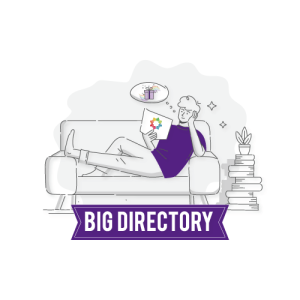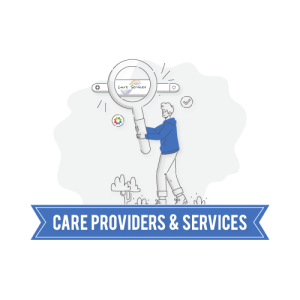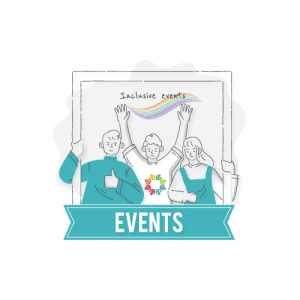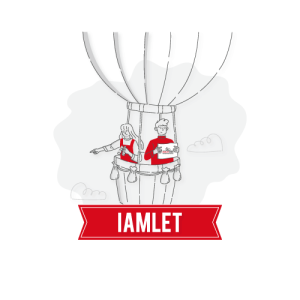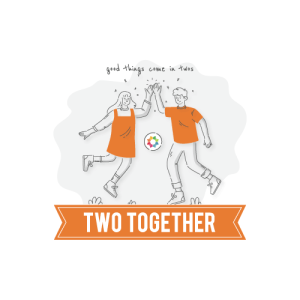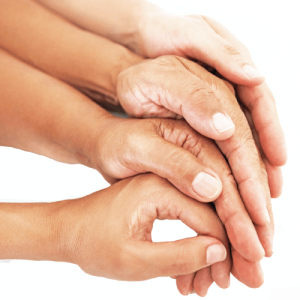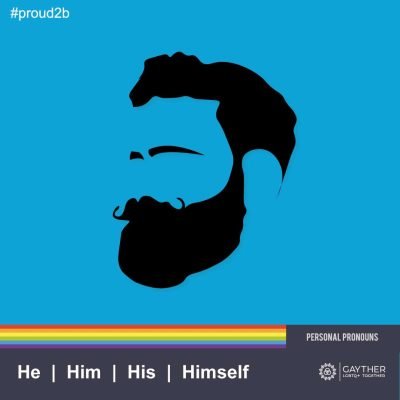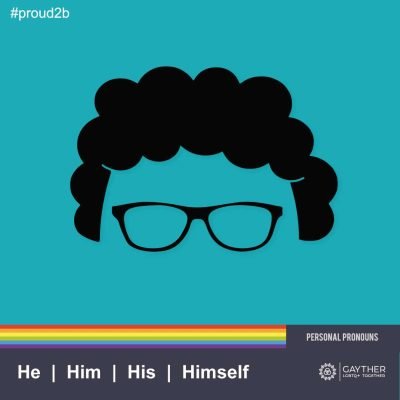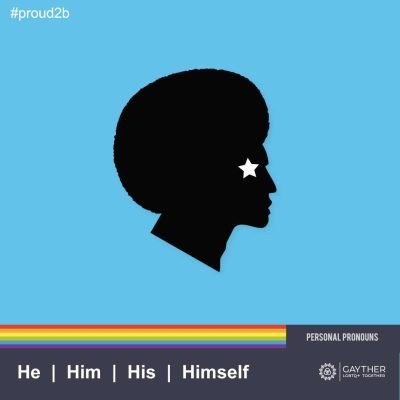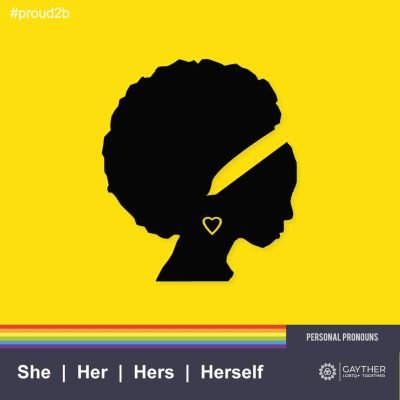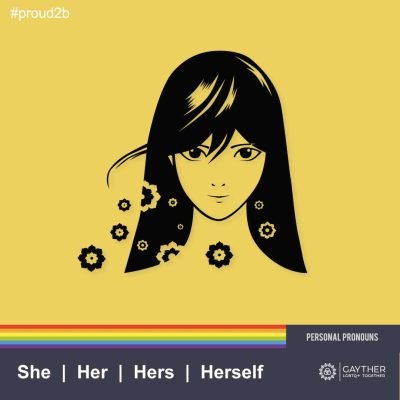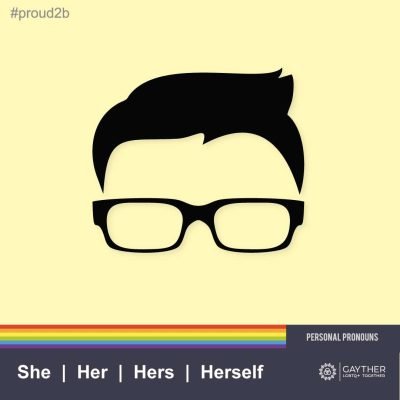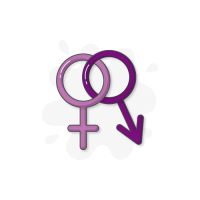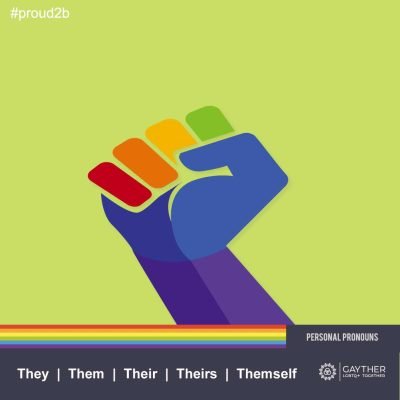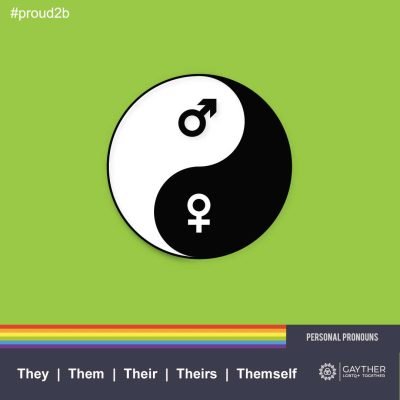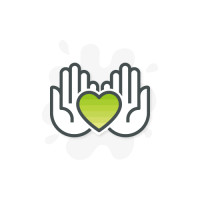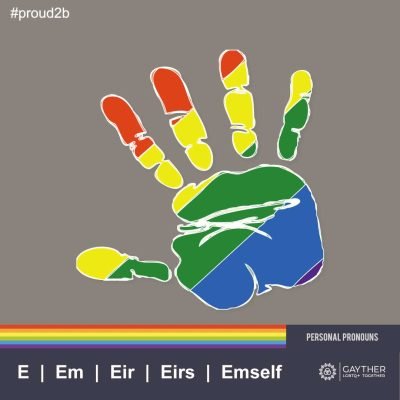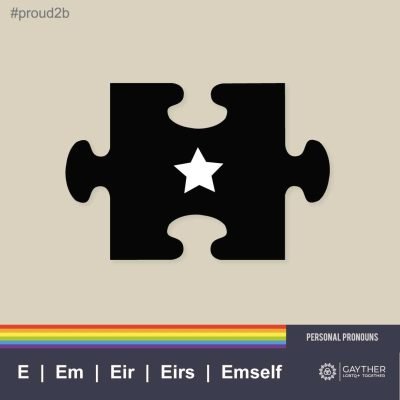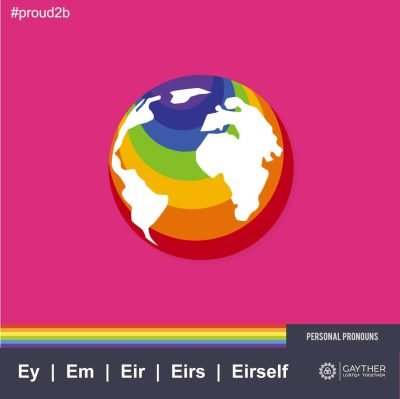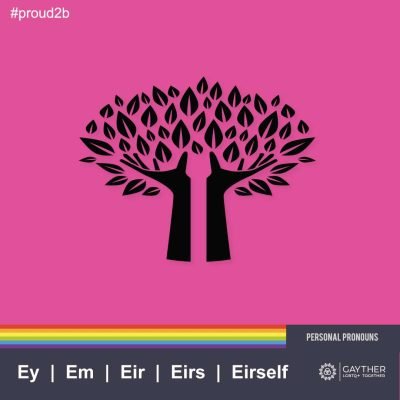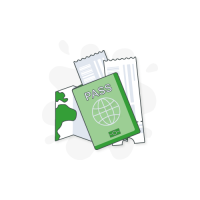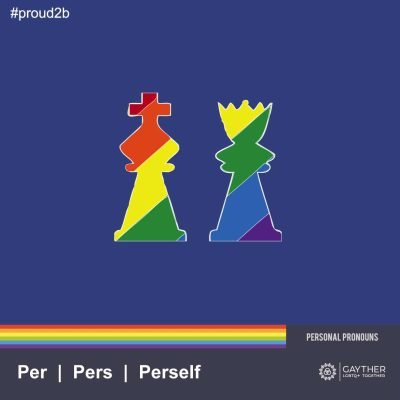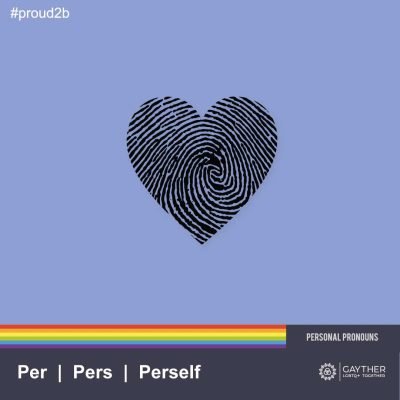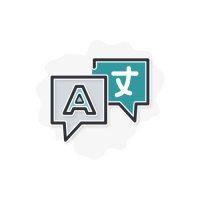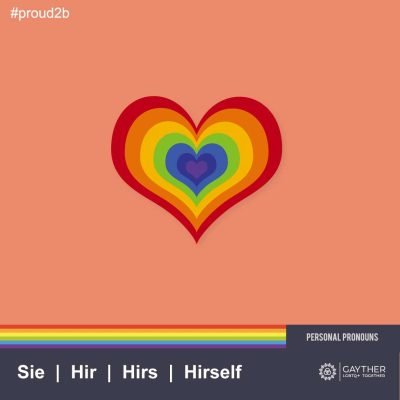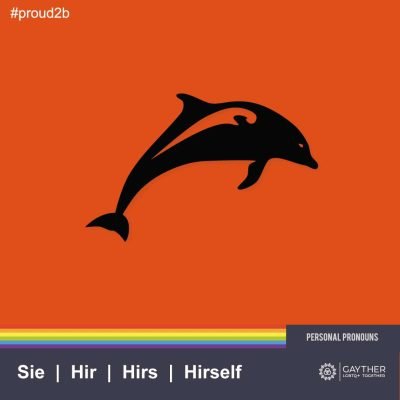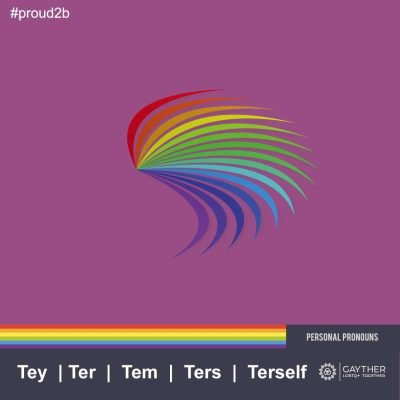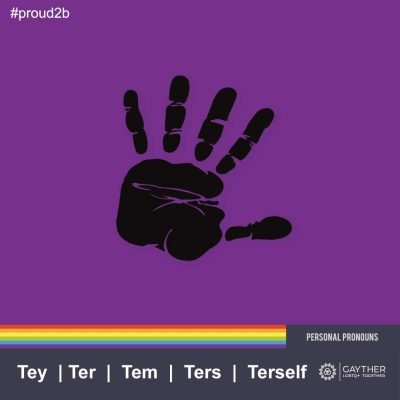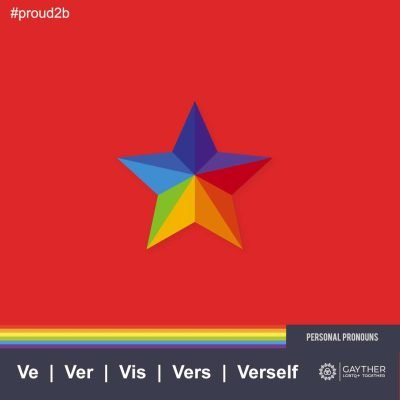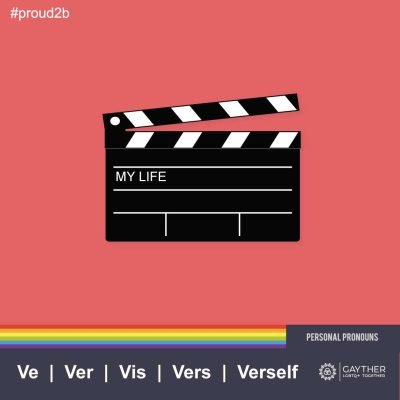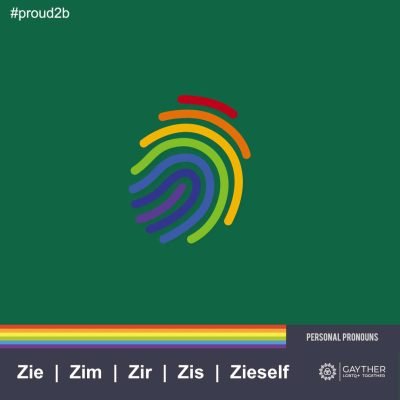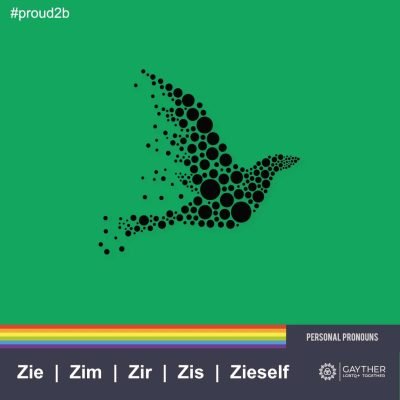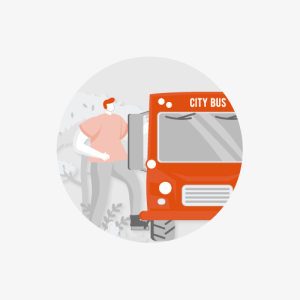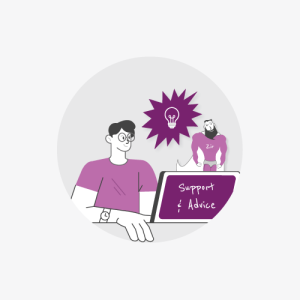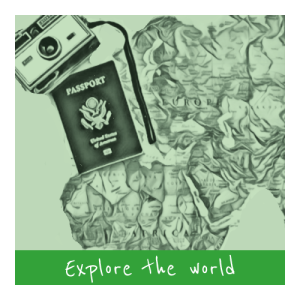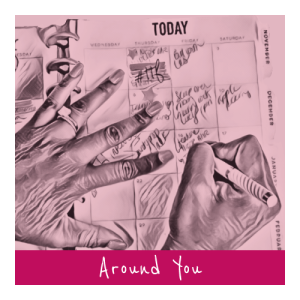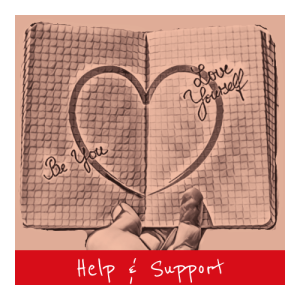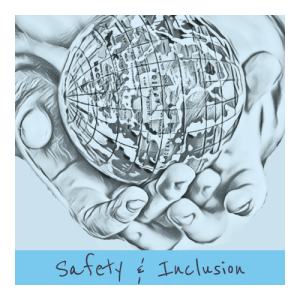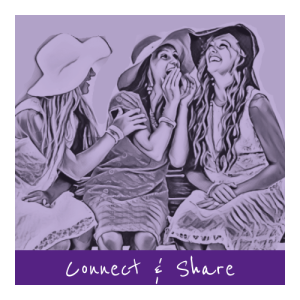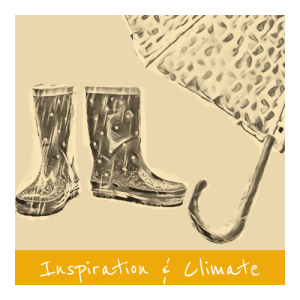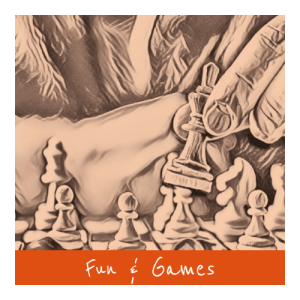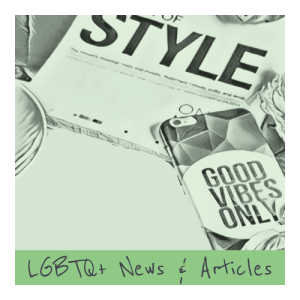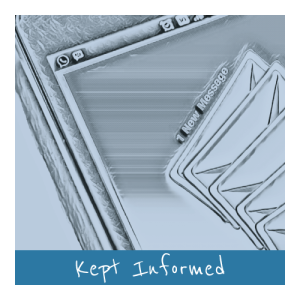
Personal pronouns have been around for centuries in many forms and languages. Pronouns are typically used when people address us directly or indirectly and how we refer to others when communicating. Traditional pronouns focus on the gender or the sex of the individual, such as he for men or she for women; however, gender-neutral pronouns have become more widely used by individuals that typically identify as transgender, gender fluid, gender non-conforming and non-binary.
The He pronoun is a modern English singular personal pronoun referring to the third person, typically those with a male or masculine identity. The He pronoun is traditional and widely
used when referring to men
PRONOUN IN ACTION
- He is happy
- It is all about Him
- His Life
- That is His
- Loves Himself
SIMILAR PRONOUNS IN OTHER LANGUAGES

DUTCH
hij, hem, zijn

FRENCH
il, lui, sien

GERMAN
er, sein, selbst

ITALIAN
lui, di lui, il suo, lui stesso

PORTUGUESE
ele, dele, nele

SPANISH
él, su, él mismo, el

SWEDISH
han, honom, hans
SHARE
Images to promote and share your personal pronouns
HE PRONOUN NAME BADGES & EMAIL FOOTERS
Download a wide selection of colourful pronoun badges and email footers, all designed to help you share and communicate your preferred pronouns. Once you click on the link, a PDF document will download displaying your chosen pronouns. You are free to print and use the templates for both personal and business use
The She pronoun is a modern English singular personal pronoun referring to the third-person, typically those with a female, femxle or feminine identity. The She pronoun is traditional and widely used when referring to women or womxn
PRONOUN IN ACTION
- She is happy
- It is all about Her
- Her life
- That is Hers
- Loves Herself
SIMILAR PRONOUNS IN OTHER LANGUAGES

DUTCH
zij, haar, haar

FRENCH
elle, elle, sienne

GERMAN
sie, ihr, sie selber

ITALIAN
lei, di lei, la sua, se stessa

PORTUGUESE
ela, dela, nela

SPANISH
ella, su, ella misma, la

SWEDISH
hon, hennes, hennes
SHARE
Images to promote and share your personal pronouns
SHE PRONOUN NAME BADGES & EMAIL FOOTERS
Download a wide selection of colourful pronoun badges and email footers, all designed to help you share and communicate your preferred pronouns. Once you click on the link, a PDF document will download displaying your chosen pronouns. You are free to print and use the templates for both personal and business use
DISCOVER WHICH COUNTRIES LEGALLY RECOGNISE GENDER IDENTITIES...
Gender and body dysmorphia affects many people each year. Many will feel trapped in the wrong body and look to transform their outer appearance to reflect their inner self. For those going through their transition, it is often a challenge and lengthy process. Discover how each country around the world legally acknowledges and treats gender identities
The They pronoun is a modern English pronoun with two usages, in plural form when referring to a group or a singular personal pronoun referring to the third person. The singular pronoun relating to they dates back to the 14th century, which was revived in the 21st century. The They pronoun is typically used by individuals that are gender non-conforming, genderfluid or any of the various non-binary identities
PRONOUN IN ACTION
- They is happy
- It is all about Them
- Their life
- That is Theirs
- Loves Themself
SIMILAR PRONOUNS IN OTHER LANGUAGES

DUTCH
ze, hen/hun, hunne

FRENCH
elle, elle, sienne

GERMAN
sie, ihre, sich selbst

ITALIAN
loro, loro, il loro, loro stessi

PORTUGUESE
eles, deles, neles

SPANISH
ellos, suyo, ellos mismos, los

SWEDISH
de, dem, deras
SHARE
Images to promote and share your personal pronouns
THEY PRONOUN NAME BADGES & EMAIL FOOTERS
Download a wide selection of colourful pronoun badges and email footers, all designed to help you share and communicate your preferred pronouns. Once you click on the link, a PDF document will download displaying your chosen pronouns. You are free to print and use the templates for both personal and business use
TAKING PRIDE IN YOU
Acceptance and coming to terms with a part of what makes you can be challenging for many people. The Gayther pride in series is about celebrating all things relating to sexualities, gender identities and special groups. Showcasing the exceptional people, interesting facts and ways to connect with those unique communities, all designed to help and promote pride in LGBTQIA+ identities
The E pronoun, also known as the Spivak pronoun, is a modern English non-gender or gender-neutral pronoun used to refer to the third person. The E pronoun was recorded to be first used in the last 1800s and 1983; the mathematician-educator Michael Spivak used the pronoun when he wrote a manual using E, Em and Eir. The pronoun is typically used by individuals that are gender non-conforming, genderfluid or any of the various non-binary identities
PRONOUN IN ACTION
- E is happy
- It is all about Em
- Eir life
- That is Eirs
- Loves Emself
SIMILAR PRONOUNS IN OTHER LANGUAGES

DUTCH
hen, hen/hun, hunne

FRENCH
iel, ielle, leur

PORTUGUESE
ile, dile, deles

SPANISH
elle, su, elle misme, le

SWEDISH
hen, henom, hens
SHARE
Images to promote and share your personal pronouns
E PRONOUN NAME BADGES & EMAIL FOOTERS
Download a wide selection of colourful pronoun badges and email footers, all designed to help you share and communicate your preferred pronouns. Once you click on the link, a PDF document will download displaying your chosen pronouns. You are free to print and use the templates for both personal and business use
The Ey pronoun, also known as the Elverson pronoun, is a modern English non-gender or gender-neutral pronoun used to refer to the third person. The Ey pronoun was created in 1975 by Christine Elverson, who won a contest that the Chicago Association of Business Communicators arranged. The competition was looking to establish a replacement for traditional gender pronouns for the transgender community. Elverson created the pronoun by removing th from they. The pronoun is typically used by individuals that are gender non-conforming, genderfluid or any of the various non-binary identities
PRONOUN IN ACTION
- Ey is happy
- It is all about Em
- Eir life
- That is Eirs
- Loves Eirself
SIMILAR PRONOUNS IN OTHER LANGUAGES

DUTCH
die, hen/hun, hunne

FRENCH
ille, illes, leur

PORTUGUESE
elu, delu, nelu
SHARE
Images to promote and share your personal pronouns
EY PRONOUN NAME BADGES & EMAIL FOOTERS
Download a wide selection of colourful pronoun badges and email footers, all designed to help you share and communicate your preferred pronouns. Once you click on the link, a PDF document will download displaying your chosen pronouns. You are free to print and use the templates for both personal and business use

Personal pronouns have been around for centuries in many forms and languages. Pronouns are typically used when people address us directly or indirectly and how we refer to others when communicating. Traditional pronouns focus on the gender or the sex of the individual, such as he for men or she for women; however, gender-neutral pronouns have become more widely used by individuals that typically identify as transgender, gender fluid, gender non-conforming and non-binary.
To understand the importance of pronouns, imagine waking up one morning and looking at yourself in the mirror. When you look at yourself, you cannot identify your reflection in the mirror. The person looking back at you is the opposite sex to what you have always known yourself to be or your assigned gender at birth. You try to conform and accept this new identity; however, when you go for a coffee, the barista refers to you as maim or sir, instantly reminding you how everyone else sees you. It would likely upset most people; however, this is the reality for many individuals that do not conform to conventional or traditional gender identities.
Some may view gender pronouns as old fashioned and antiquated. They are generally used to distinguish between genders, so if we live in an equal society, should there be a difference between his and hers? Others will likely prefer traditional gender pronouns, whereas some may feel that those pronouns do not represent them. Ultimately it is around choice, about how you like to be addressed or referred to, and the responsibility of us all to respect a person’s choice and, when communicating with them, to use their preferred personal pronouns.
Introduce the world to your true self (#proud2blgbtq) by selecting one of the many free available images relating to your chosen personal pronoun. You can share any of the images via Facebook, Twitter, Pinterest or via Gayther Affinity
To understand the importance of pronouns, imagine waking up one morning and looking at yourself in the mirror. When you look at yourself, you cannot identify your reflection in the mirror. The person looking back at you is the opposite sex to what you have always known yourself to be or your assigned gender at birth. You try to conform and accept this new identity; however, when you go for a coffee, the barista refers to you as maim or sir, instantly reminding you how everyone else sees you. It would likely upset most people; however, this is the reality for many individuals that do not conform to conventional or traditional gender identities.
Some may view gender pronouns as old fashioned and antiquated. They are generally used to distinguish between genders, so if we live in an equal society, should there be a difference between his and hers? Others will likely prefer traditional gender pronouns, whereas some may feel that those pronouns do not represent them. Ultimately it is around choice, about how you like to be addressed or referred to, and the responsibility of us all to respect a person’s choice and, when communicating with them, to use their preferred personal pronouns.
Introduce the world to your true self (#proud2blgbtq) by selecting one of the many free available images relating to your chosen personal pronoun. You can share any of the images via Facebook, Twitter, Pinterest or via Gayther Affinity
LGBTQIA+ COUNTRY & REGION GUIDES
With countries around the world treating members of the LGBTQIA+ community differently, planning an overseas trip can be challenging. With over 233 country and 435 regional guides, Gayther guides provide you with all the information you need when planning your trip. From LGBTQIA equality to essential travel information, discover Gayther guides today
The Per pronoun, also known as the person pronoun, is a modern English non-gender or gender-neutral pronoun used to refer to the third person. The pronoun was created and first used in 1972 when John Clark used the pronoun in an issue of the Newsletter of the American Anthropological Association. The Per pronoun is typically used by individuals that are gender non-conforming, genderfluid or any of the various non-binary identities
PRONOUN IN ACTION
- Per is happy
- It is all about Per
- Pers life
- That is Pers
- Loves Perself
SHARE
Images to promote and share your personal pronouns
PER PRONOUN NAME BADGES & EMAIL FOOTERS
Download a wide selection of colourful pronoun badges and email footers, all designed to help you share and communicate your preferred pronouns. Once you click on the link, a PDF document will download displaying your chosen pronouns. You are free to print and use the templates for both personal and business use
WHAT LANGUAGES ARE SPOKEN WHERE
It is estimated that there are over seven thousand languages and dialects spoken around the world. When travelling, it is important to find out what languages are spoken where, as well, as key phrases and terms in those languages. The Gayther Worldwide languages guide features all of the main languages spoken around the world, organised by country and region. Discover all things languages today
The Sie pronoun is a modern English non-gender or gender-neutral pronoun used to refer to the third person. The pronoun is derived from the German pronoun of sie, which means she or they. The Sie pronoun has been around since the 1990s, typically used by individuals who are gender non-conforming, genderfluid, or any of the various non-binary identities
PRONOUN IN ACTION
- Sie is happy
- It is all about Sie
- Hir life
- That is Hirs
- Loves Hirself
SHARE
Images to promote and share your personal pronouns
SIE PRONOUN NAME BADGES & EMAIL FOOTERS
Download a wide selection of colourful pronoun badges and email footers, all designed to help you share and communicate your preferred pronouns. Once you click on the link, a PDF document will download displaying your chosen pronouns. You are free to print and use the templates for both personal and business use
The Tey pronoun is a modern English non-gender or gender-neutral pronoun used to refer to the third person. The pronoun is a variation of the singular they pronoun. The Tey pronoun is typically used by individuals that are gender non-conforming, genderfluid or any of the various non-binary identities
PRONOUN IN ACTION
- Tey is happy
- It is all about Ter
- Tem life
- That is Ters
- Loves Terself
SHARE
Images to promote and share your personal pronouns
TEY PRONOUN NAME BADGES & EMAIL FOOTERS
Download a wide selection of colourful pronoun badges and email footers, all designed to help you share and communicate your preferred pronouns. Once you click on the link, a PDF document will download displaying your chosen pronouns. You are free to print and use the templates for both personal and business use
The Ve pronoun is a modern English non-gender or gender-neutral pronoun used to refer to the third person. The pronoun was created in 1970 when it appeared in the May issue of Everywoman. The Ve pronoun is typically used by individuals that are gender non-conforming, genderfluid or any of the various non-binary identities
PRONOUN IN ACTION
- Ve is happy
- It is all about Ver
- Vis life
- That is Vers
- Loves Verself
SHARE
Images to promote and share your personal pronouns
VE PRONOUN NAME BADGES & EMAIL FOOTERS
Download a wide selection of colourful pronoun badges and email footers, all designed to help you share and communicate your preferred pronouns. Once you click on the link, a PDF document will download displaying your chosen pronouns. You are free to print and use the templates for both personal and business use
The Zie pronoun is a modern English non-gender or gender-neutral pronoun used to refer to the third person. The date on which the pronoun was first created is unknown; however, in 2000, Andrés Pérez-Bergquist wrote an article entitled ‘The value of Zie’ in which Andrés expanded the use of the zie pronoun set. The Zie pronoun is typically used by individuals that are gender non-conforming, genderfluid or any of the various non-binary identities
PRONOUN IN ACTION
- Zie is happy
- It is all about Zim
- Zir life
- That is Zis
- Loves Zieself
SHARE
Images to promote and share your personal pronouns
ZIE PRONOUN NAME BADGES & EMAIL FOOTERS
Download a wide selection of colourful pronoun badges and email footers, all designed to help you share and communicate your preferred pronouns. Once you click on the link, a PDF document will download displaying your chosen pronouns. You are free to print and use the templates for both personal and business use
Discover showcase on Gayther. An area designed to highlight innovative products, services, and series which will directly benefit or are exclusively tailored to the LGBTQIA+ community
Quickly find all the information you need when planning a trip. Home to over 600 detailed country and regional guides, including a wide range of general information as well as dedicated LGBTQIA+ specific details
Search over 900 unique weather locations using the fun and interactive weather tool. Discover the best time to travel to a specific area, when is it the hottest, when is the least chance of rain or when it might snow
Planning a trip takes time and effort. Deciding where to go and how to get there can be a challenge. The interactive travel tool is home to thousands of airports, trains, buses and ports worldwide
Gayther Affinity is a private platform for the global LGBTQIA+ community. A space that gives you the freedom to be yourself. Helping you communicate with and connect to people similar to yourself. People from around the world from all age groups and backgrounds. Signup for your free Affinity account today
The big directory comprises fourteen groups and over one thousand categories, from travel accommodation to home maintenance
There are thousands of events taking place, it is not always easy to know what is going on and when, Gayther can help
The Care Providers and Services directory lists businesses and services that are inclusive and welcoming to all
There are millions of non-profit organisations, advice services, and support groups worldwide, all designed to help you
The RM Directory is designed to showcase organisations and services experienced in assisting those seeking refuge or relocating. Whether a refugee who is forced to leave home due to war or a migrant seeking out better living conditions, the RM Directory can help
Gayther is home to seven interactive directories. From detailed weather information to listing services which showcase the inclusivity of businesses, services and events to the global LGBTQIA+ community. Learn more about the individual directories and how they can help you connect with whatever you want and need. Discover more about Gayther today
Learn more about yourself by taking any one of the Gayther personality tests or by taking part in any of the questionnaires
Direct to your inbox, be the first to find out about the latest articles, community news and upcoming events from the fortnightly Gayther Newsletter
A problem shared is a problem halved. We all need a little support, advice and help sometimes, so why not use our Agony Zir service
Gayther...your community resources
Three dedicated websites offer various tools, services, guides, and much more. Free tools and services tailored toward all groups within the global LGBTQIA+ community
Discover more about the extensive tools, services and guides available on Gayther. From country and regional guides to LGBTQIA+ community resources, learn more about all that Gayther has to offer
IMPORTANT DISCLAIMER: The information displayed on this page is for illustrative purposes only and does not constitute advice. It is essential that before travelling that you independently establish information relating specifically to your requirements and circumstances. Though we endeavour to keep all information across the site updated, we do not guarantee the accuracy and completeness of any information displayed. The languages and terms featured on this page are literal translations and have not been validated or verified. The service is provided free of charge, and by using it, you accept that you are doing so at your own risk. This page may contain external links to third party websites; Gayther provides these links for your convenience and does not endorse, warrant or recommend any particular products or services. By clicking on any external links, you will leave Gayther and be taken to the third-party website, which you do so at your own risk and by accessing the site, you will be required to comply with the external third party’s terms and conditions of use and privacy policies

